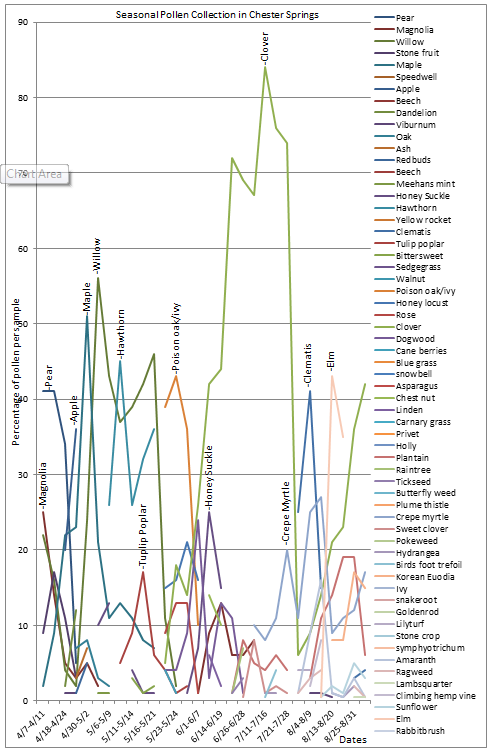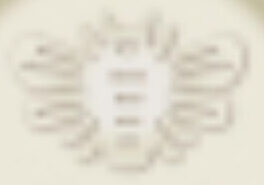Pollen DNA testing
We have had extensive pollen DNA analysis testing completed to capture the spectrum of pollen our bees bring in through April to September. Pollen was collected everyday from our pollen traps at one of our home yards. 2oz samples were measured from homogenized weekly blends of pollen collected by the bees and was frozen unit the end of the season.
Some generalizations can be drawn from the data depicted in the line graph below, yet further research is required to map the floral diversification, determine the pollen source size, direction and distance. Additional locations and repetitive sampling is required to understand our ecosystem to its expanse.
The pollen collected by the bees is a reflection of the floral diversity within the bee’s flight radius; basically if it isn’t there they can’t collect it. Environmental impact, such as a lack of rain through early summer can create an early and extended dearth as seen in 2023. Then there is the instinctual behavior of honey bees relaying foraging information through the waggle dance to other members of the colony. This social variable can cause colonies to collect pollen from different floral sources than that of an adjacent colony.
At present we are attempting to synchronize pollen dna samples from multiple years to establish and refine growing degree day models. Our intention is to create a model that can predict nectar flows as well as establishing competing vegetation blooming conflicts with pollination contracts.
For more information on Pollen DNA sampling please contact https://pollinators.psu.edu/research/the-penn-state-honey-and-pollen-diagnostic-lab

